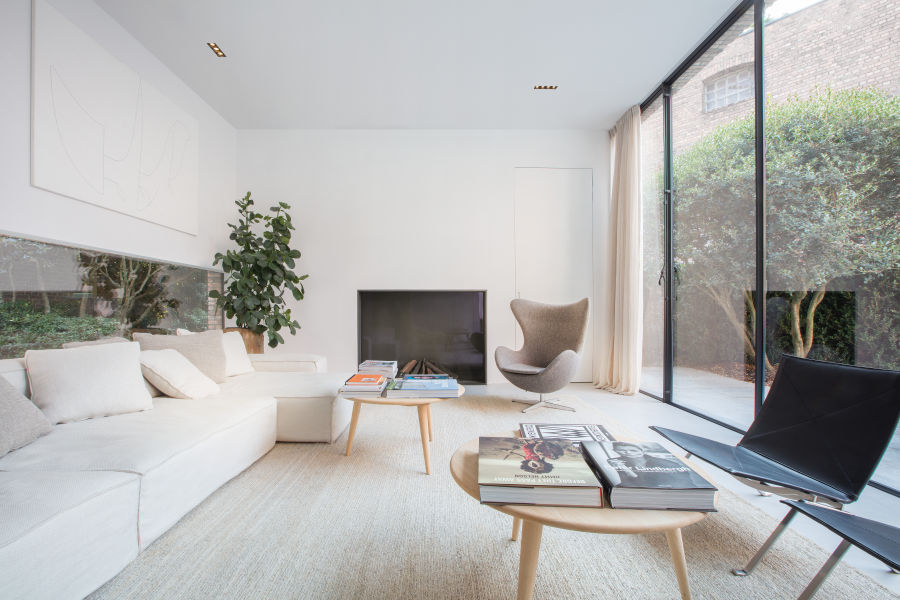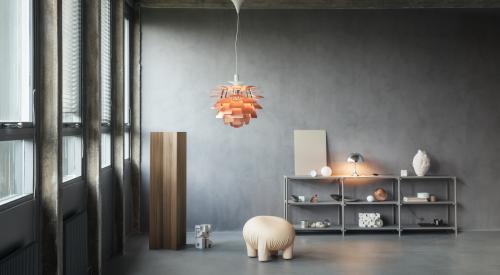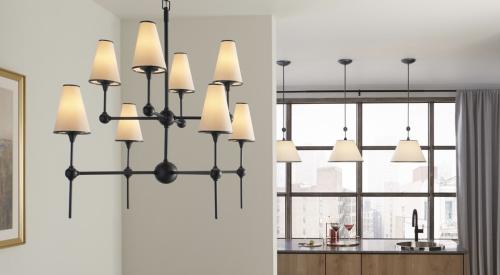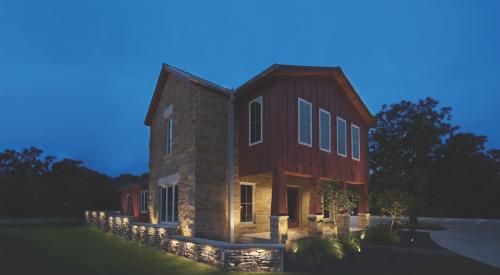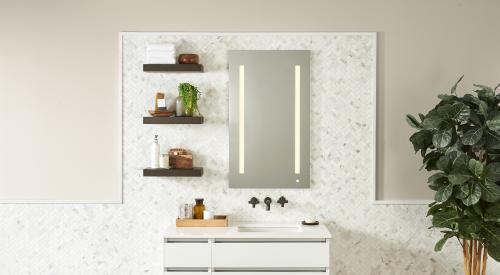Recessed lighting is one of the most versatile fixtures in a home, unobtrusive to the overall design and ideal in both modern and traditional interiors. But specifying and installing it takes planning and know-how.
Discussing recessed lighting early in the process is crucial. This sounds like common sense, but it's important to consider this when you're building your homes and remind clients why this is crucial.
“Structural framing and ductwork are two of the biggest limiting factors in existing ceilings. If these can’t move, our designs need to change,” says Gregg Mackell, principal and founder of 186 Lighting Design Group. “If we have the ability to coordinate framing, sprinklers, ductwork…around lighting layouts prior to or during construction, we can minimize the contractor’s need to redo anything.” Though, he adds, there are now some downlight products that are extremely shallow to fit under ceiling components (More on this later).

MT-4 retractable LED spotlights peek out from a rectangular opening that accommodates the system’s steel housing. The die-cast aluminum lights can adjust beam angle from 15 to 45 degrees and rotate 365 degrees horizontally and 180 vertically. Specify up to four heads in one aperture and a lumen output of 745 or 1,130. waclighting.com
WHAT, WHERE, AND WHY?
Depending on light source, beam angle, aperture size, and placement, a recessed fixture can spotlight, wash walls, or provide ambient illumination. Placement is key to which purpose it serves, whether it’s to set the mood for cocktails or direct light onto kitchen countertops. Otherwise the ceiling plane can resemble swiss cheese or beams wastefully land on the floor. (Though these moves have their uses such as creating ceiling patterns and lighting paths.)
“In almost all rooms, our studio uses recessed lighting on surfaces and objects rather than for general illumination,” says architect Cary Bernstein, principal of Cary Bernstein Architect in San Francisco. “We typically place them around the perimeter of a room to wash walls and light artwork, and sometimes over a table as a spot or task light.” She suggests using wide-spread floods to reduce the number of fixtures needed, as well as to avoid scalloping. The narrower spreads are better suited to lighting a focal point, such as artwork.
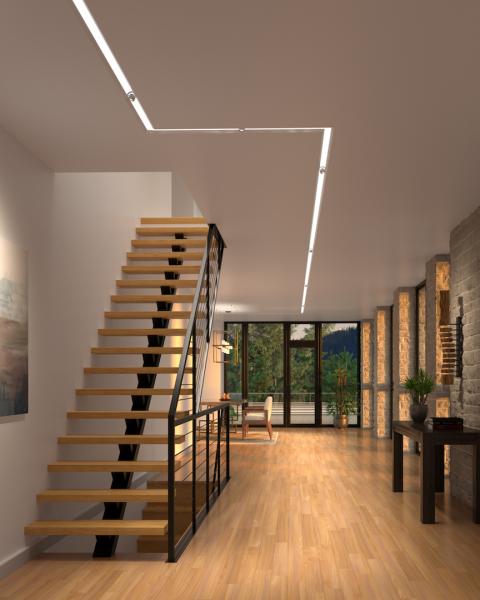
A great way to deliver glare-free indirect illumination, this Merge 1.5 recessed linear channel can create slivers of light in walls and ceilings (and even transition between wall and ceiling with 90-degree channels). The beveled aperture and flangeless option for plaster-in drywall installation result in a truly seamless appearance. The LEDs come in three white-color temperatures or a dim-to-warm range of 3,000K to 2,000K. element-lighting.com
With regards to the latter, Mackell recommends placing the fixture at 30 to 45 degrees from the center of the piece to the ceiling. “That’s the sweet spot for art mounted at eye level.” Of course, depending on the space, placement shifts to achieve these angles. “With a 9-foot ceiling, you might install the light 28 inches off the wall, but with an 18-foot ceiling, you may need to place it twice as far to keep the same angles.”
For low-ceiling spaces, such as a finished basement, Bernstein suggests using sconces or other uplights in combination with recessed lighting, “because you want to make the ceiling brighter in such spaces. Recessed downlights alone put the ceiling in shadow.”
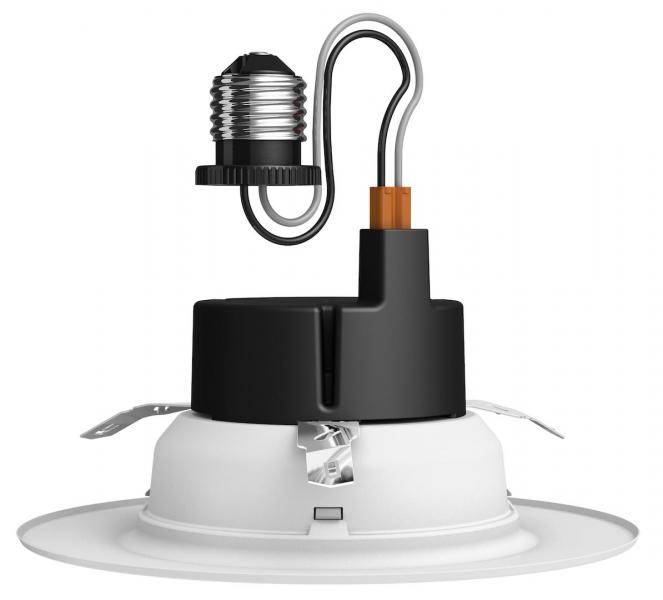
Signify (formerly Philips Lighting)
Rather than a bulb, this Hue white ambiance general downlight is the actual fixture—complete with trim and integrated LED source—and includes a standard E26 socket adapter, making it simpler to retrofit existing recessed apertures. When paired with the Hue Bridge unit, the 4-inch-diameter luminaire is dimmable and tunable (up to 50,000 shades) white light. meethue.com
Miles Stemper, who’s implemented recessed illumination in various multi-unit residential projects, concurs: “It’s desirable to make spaces like basements feel open and bright. Often the best thing to do is create even overall illumination and complement that with lighter finishes,” says Miles Stemper, an architectural designer at Valerio Dewalt Train. He also offers insight into working with other parameters: “We look for ways to conceal light sources within typical-height spaces, using fixtures that wash walls to create soft atmospheric conditions. But for taller spaces, exposing the fixtures works well for overall illumination or accentuating architectural elements.”
Another consideration is spacing for light fixtures, but what exactly is the ideal spacing for recessed cans? Online lighting retailer, LightUp.com has some ideas. "To determine how far apart to space your recessed lights, divide the height of the ceiling by two," the site says. "If a room has an 8-foot ceiling, you should space your recessed lights approximately 4 feet apart. If the ceiling is 10 feet, you'll want to put about 5 feet of space in between each fixture."
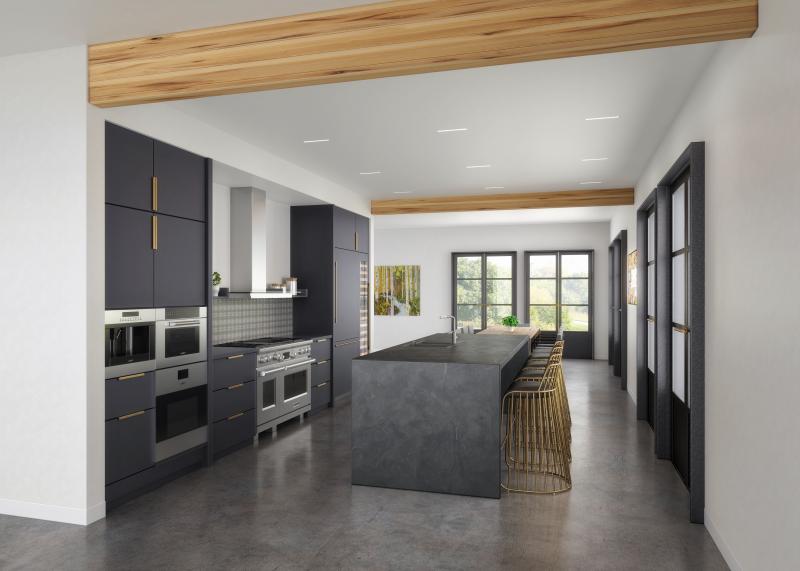
One of the issues design professionals unanimously lament is trying to fit recessed lighting into an already crowded ceiling area. Fortunately, some manufacturers have been developing possible solutions. Expanding on USAI’s already popular BeveLED family, for instance, Micro offers a remote driver option, resulting in a more compact housing that can fit shallow plenums. Specify downlights, wall washers, and adjustable spots for two-, four-, six-, eight-, and 12-lamp formats, all of which are only 1.25 inches wide. usailighting.com
A popular architectural element in homes right now is the lofty sloped ceiling, and it, too, can incorporate recessed lighting. Mackell explains that the fixtures should be adjustable to aim straight down. He gives an example of a 12/12 pitch ceiling, which would call for a 45-degree adjustable fixture. One caveat: Avoid installing recessed downlights in ceilings that are also heavily insulated rooflines, as such perforations will impact the insulation R-value.
A final tip the experts offer is to control the recessed fixtures with dimmers to light specific groupings or areas for establishing a mood, decreasing energy use, and illuminating tasks. Furthermore, ensure that the dimmer type matches the load type to function properly. Dimmers that are tested and UL listed for incandescent and halogen bulbs differ from those designed for LED drivers.
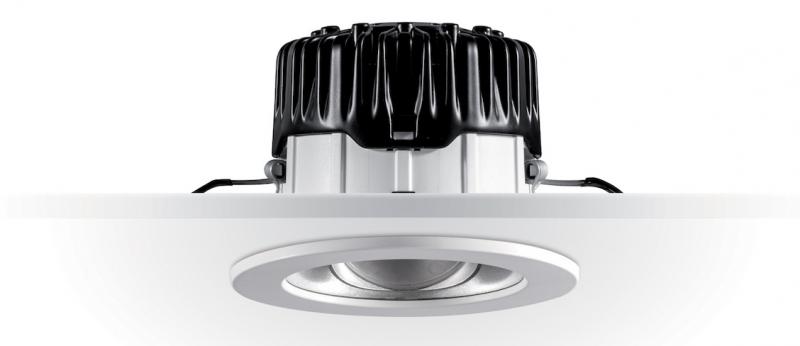
New to the CCTLed line is a mini downlight with a wall-wash optic. Designed to provide visual interest in architectural settings, the die-cast aluminum recessed LED has a 4-inch aperture and interchangeable reflectors and trims. Available in a 6-inch version, it also comes in 14 or 20 watts, an 84 color rendering index, and 2700K and 3000K color temperatures. targetti.us
RECESSED LIGHTING TRENDS TO WATCH
Mackell points to recessed, trimless linear systems. While it’s been popular in commercial settings for some time, it’s only recently percolated into residential design. These provide good general lighting and can add a graphic element in walls and ceilings.
“Lighting is increasingly used as a graphic detail in architecture, which leads to beautiful interplays between material and light,” Bernstein says. In particular she cites Aion LED’s AT series: “It’s a great line of light. It can be any length and is very shallow—sometimes the thickness of drywall—so it can be installed in many locations.”
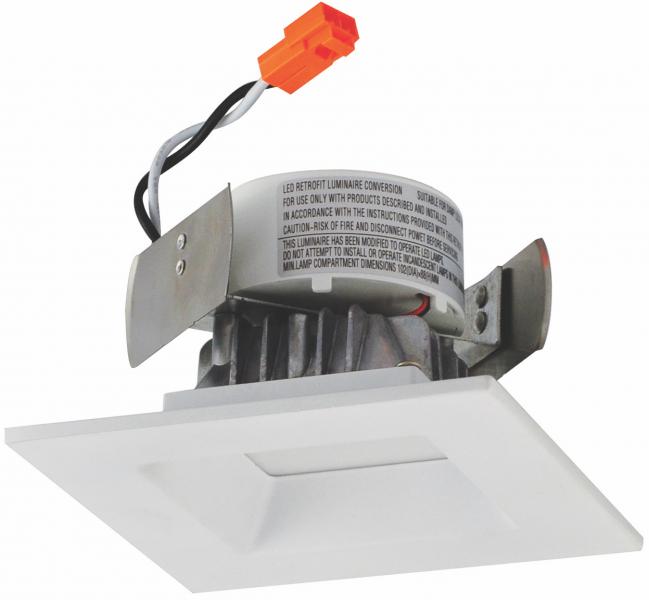
Onyx Squares is a die-cast aluminum retrofit LED downlight ideal for a variety of situations. Available in 3- and 4.125-inch apertures, products have a medium-base socket adapter, 90+ CRI, and come in 2700K, 3000K, and 4000K color temperatures. noralighting.com
Tunable-white lamps are still a force in the industry, as designers, architects, and consumers learn more about potential health and lifestyle benefits, such as cooler tones for stimulating alertness and warmer glows for assisting circadian rhythms and, eventually, sleep. And, while still disputed, certain white temperatures may also positively impact seasonal affective disorder.
Finally, one can’t explore lighting trends without tripping over smart-home technology. Smart lighting used to be about controlling fixtures via mobile app, but 2019 may be the year of voice control.
According to a joint survey conducted by NPR and Edison Research, the number of smart speakers in U.S. households grew from 66.7 million in 2017 to 118.5 million in 2018, dominated by Amazon Alexa and Google Home. Then at the start of this year, various lighting brands unveiled recessed fixtures that work with either or both of these voice-assistant devices. Each touts slight differences, from integrated speakers to full-spectrum color. There’s no telling which of these will become the most requested by clients, but the one thing that is certain is that lighting control has come a very long way from The Clapper.
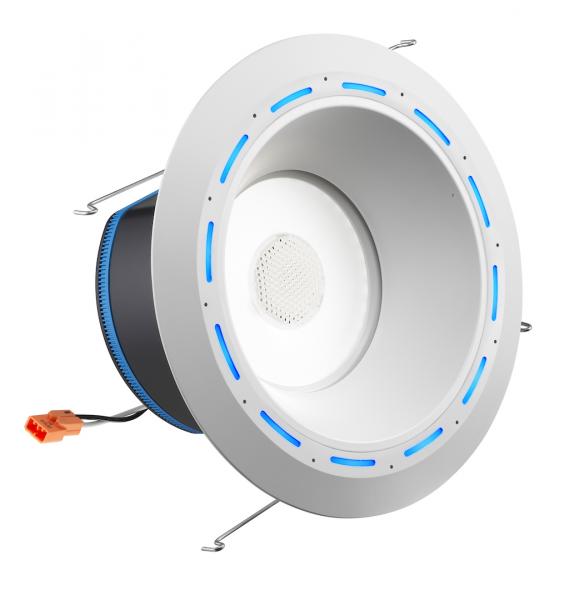
This Juno AI smart home LED downlight (which can also be retrofitted into existing recessed housing) boasts Alexa compatibility for voice control to varying degrees. The standard unit uses it to control up to 200 paired Juno AI lights and connects via Wi-Fi. The second tier does the same but integrates a premium JBL speaker to stream audio and works with both Wi-Fi and Bluetooth. And the top tier has all these capabilities but additionally pairs up to 200 other smart devices such as thermostats and door locks. juno.acuitybrands.com
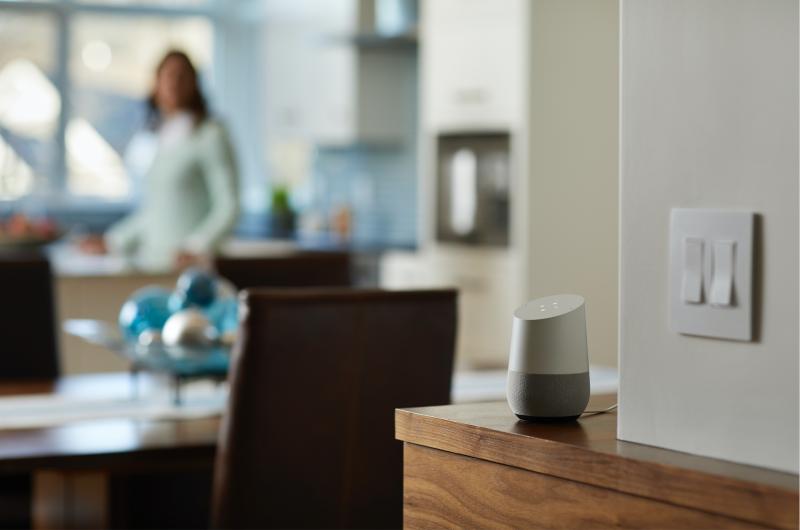
Leveraging Samsung’s Artik cloud services, this Legrand Radiant Collection smart light switch works with just about all the major smart-home platforms—Amazon Alexa, Google Home, Nest, Ring—and has Open Connectivity Foundation certification, meaning it can connect to other OCF-certified IoT devices no matter the brand. legrand.us
